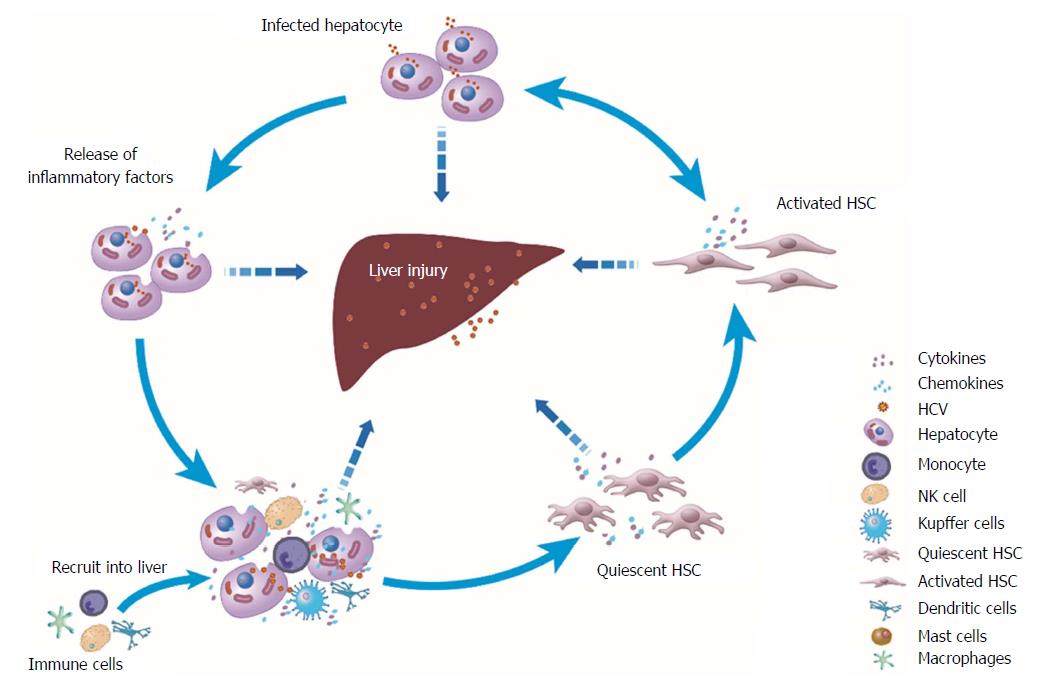Copyright
©The Author(s) 2018.
World J Gastroenterol. Dec 21, 2018; 24(47): 5297-5311
Published online Dec 21, 2018. doi: 10.3748/wjg.v24.i47.5297
Published online Dec 21, 2018. doi: 10.3748/wjg.v24.i47.5297
Figure 1 Mechanisms of hepatitis C virus-induced inflammation.
Hepatitis C virus (HCV) RNA triggers Toll-like receptor mediated nuclear factor (NF)-κB activation and inflammatory cytokine release, while HCV proteins mainly lead to oxidative and endoplasmic reticulum stress and potassium efflux, causing the Nod-like receptor pyrin domain containing inflammasome activation. The released inflammatory factors bind to their corresponding receptors and then directly induce NF-κB activation or indirectly lead to signalling pathway mediated downstream inflammatory response. HCV: Hepatitis C virus; ERS: Endoplasmic reticulum stress; AP-1: Activating protein-1; ASC: Apoptosis-associated speck-like protein containing CARD; DAMP: Damage associated molecular patterns; mtDNA: Mitochondrial DNA; MyD88: Myeloid differentiation factor 88; NLRP3: Nod-like receptor pyrin domain containing 3; ROS: Reactive oxygen species; vRNA: Viral RNA; TLR: Toll-like receptor; TNF-α: Tumor necrosis factor-α; IL: Interleukin.
Figure 2 Inflammatory cascade responses in the hepatic microenvironment.
Crosstalk among parenchymal cells (hepatocytes), non-parenchymal liver cells (Kupffer cells and hepatic stellate cells) and recruited immune cells (macrophages, mast cells, dendritic cells and natural killer cells) plus hepatitis C virus replication in the hepatic microenvironment mediates inflammatory cascade signalling and exacerbates liver injury and disease progression. HSC: Hepatic stellate cells; NK: Natural killer; HCV: Hepatitis C virus.
Figure 3 Promising anti-inflammatory/hepatoprotective agents for chronic hepatitis C.
HCV: Hepatitis C virus; IFN: Interferon; NS: Non-structural; HO-1: Heme oxygenase-1; TLR: Toll-like receptor.
- Citation: Li H, Huang MH, Jiang JD, Peng ZG. Hepatitis C: From inflammatory pathogenesis to anti-inflammatory/hepatoprotective therapy. World J Gastroenterol 2018; 24(47): 5297-5311
- URL: https://www.wjgnet.com/1007-9327/full/v24/i47/5297.htm
- DOI: https://dx.doi.org/10.3748/wjg.v24.i47.5297











